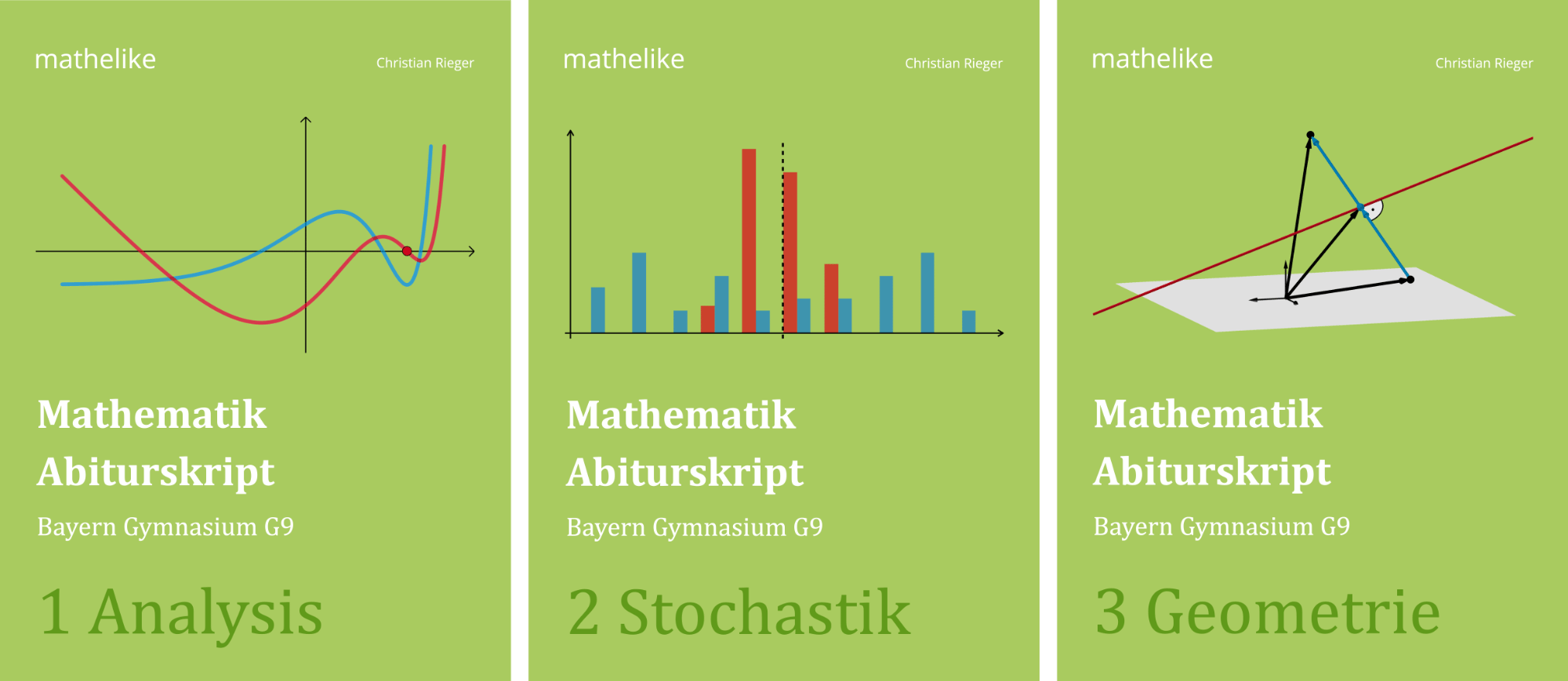In einem kartesischen Koordinatensystem sind die Punkte \(A\,(1|7|3)\), \(B\,(6|-7|1)\) und \(C\,(-2|1|-3)\) gegeben.
Weisen Sie nach, dass die Punkte \(A\), \(B\) und \(C\) ein rechtwinkliges Dreieck festlegen, dessen Hypothenuse die Strecke \([AB]\) ist und dessen kürzere Kathete die Länge 9 hat.
(4 BE)
Lösung zu Teilaufgabe a
Nachweis, dass das Dreieck \(ABC\) rechtwinklig ist
Wenn die Strecke \([AB]\) die Hypotenuse des rechtwinkligen Dreiecks \(ABC\) festlegt, dann legen die Strecken \([AC]\) und \([BC]\) die Katheten fest.
Folglich muss gelten: \(\; \overrightarrow{AC} \perp \overrightarrow{BC}\,\).
Anwendung des Skalarprodukts:
Orthogonale (zueinander senkrechte) Vektoren (vgl. Merkhilfe)
\[\overrightarrow{a} \perp \overrightarrow{b} \; \Leftrightarrow \; \overrightarrow{a} \circ \overrightarrow{b} \quad (\overrightarrow{a} \neq \overrightarrow{0},\; \overrightarrow{b} \neq \overrightarrow{0})\]
\[\overrightarrow{CA} = \overrightarrow A - \overrightarrow C = \begin {pmatrix} 1 \\ 7 \\ 3 \end {pmatrix} - \begin {pmatrix} -2 \\ 1 \\ -3 \end {pmatrix} = \begin {pmatrix} 3 \\ 6 \\ 6 \end {pmatrix} = 3 \cdot \begin {pmatrix} 1 \\ 2 \\ 2 \end {pmatrix}\]
\[\overrightarrow{CB} = \overrightarrow B - \overrightarrow C = \begin {pmatrix} 6 \\ -7 \\ 1 \end {pmatrix} - \begin {pmatrix} -2 \\ 1 \\ -3 \end {pmatrix} = \begin {pmatrix} 8 \\ -8 \\ 4 \end {pmatrix} = 4 \cdot \begin {pmatrix} 2 \\ -2 \\ 1 \end {pmatrix}\]
Skalarprodukt
Unter dem Skalarprodukt \(\overrightarrow{a} \circ \overrightarrow{b}\) zweier Vektoren \(\overrightarrow{a}\) und \(\overrightarrow{b}\) versteht man das Produkt aus den Beträgen der beiden Vektoren und dem Kosinus des von den Vektoren eingeschlossenen Winkels \(\varphi\).
\[\overrightarrow{a} \circ \overrightarrow{b} = \vert \overrightarrow{a} \vert \cdot \vert \overrightarrow{b} \vert \cdot \cos{\varphi} \quad (0^{\circ} \leq \varphi \leq 180^{\circ})\]
Berechnung eines Skalarprodukts im \(\boldsymbol{\mathbb R^{3}}\) (vgl. Merkhilfe)
\[\overrightarrow{a} \circ \overrightarrow{b} = \begin{pmatrix} a_{1} \\ a_{2} \\ a_{3} \end{pmatrix} \circ \begin{pmatrix} b_{1} \\ b_{2} \\ b_{3} \end{pmatrix} = a_{1}b_{1} + a_{2}b_{2} + a_{3}b_{3}\]
\[\begin{align*} \overrightarrow{CA} \circ \overrightarrow{CB} &= \left[ 3 \cdot \begin {pmatrix} 1 \\ 2 \\ 2 \end {pmatrix} \right] \circ \left[ 4 \cdot \begin {pmatrix} 2 \\ -2 \\ 1\end {pmatrix} \right] \\[0.8em] &= 12 \cdot \left[1 \cdot 2 + 2 \cdot (-2) + 2 \cdot 1 \right] \\[0.8em] &= 0 \end{align*}\]
\[\Longrightarrow \quad \overrightarrow{CA} \perp \overrightarrow{CB}\]
\(\Longrightarrow \quad\) Die Punkte \(A\), \(B\) und \(C\) legen ein rechtwinkliges Dreieck fest.
Nachweis, dass die kürzere Kathete des Dreiecks \(ABC\) die Länge \(9\) hat
Betrag eines Vektors
\[ \vert \overrightarrow{a} \vert = \sqrt{\overrightarrow{a} \circ \overrightarrow{a}} = \sqrt{{a_1}^2 + {a_2}^2 + {a_3}^2}\]
(vgl. Merkhilfe)
\[\frac{\left| \overrightarrow{CA} \right|}{\left| \overrightarrow{CB} \right|} = \frac{\left| 3 \cdot \begin {pmatrix} 1 \\ 2 \\ 2 \end {pmatrix} \right|}{\left| 4 \cdot \begin {pmatrix} 2 \\ -2 \\ 1 \end {pmatrix} \right|} = \frac{3 \cdot \overbrace{\left| \begin {pmatrix} 1 \\ 2 \\ 2 \end {pmatrix} \right|}^{3}}{4 \cdot \underbrace{\left| \begin {pmatrix} 2 \\ -2 \\ 1 \end {pmatrix} \right|}_{3}} = \frac{3}{4} \quad \Longrightarrow \quad \left| \overrightarrow{CA} \right| = \frac{3}{4} \cdot \left| \overrightarrow{CB} \right|\]
\(\Longrightarrow \quad\) Die Strecke \([AC]\) legt die kürzere Kathete fest.
\[\left| \overrightarrow{CA} \right| = \left| 3 \cdot \begin {pmatrix} 1 \\ 2 \\ 2 \end {pmatrix} \right| = 3 \cdot \left| \begin {pmatrix} 1 \\ 2 \\ 2 \end {pmatrix} \right| = 3 \cdot \sqrt{1^2 + 2^2 + 2^2} = 9\]


